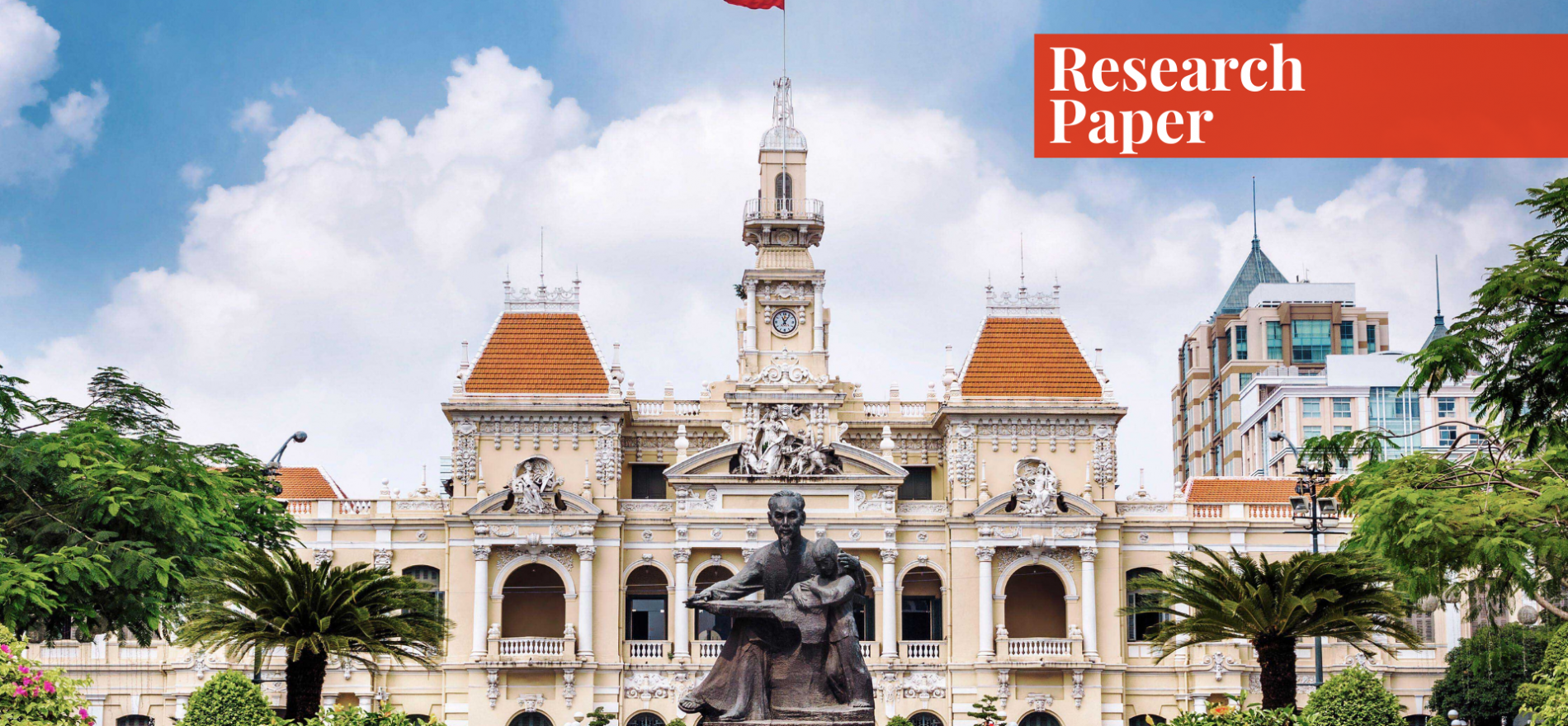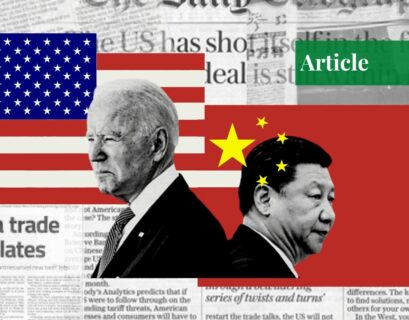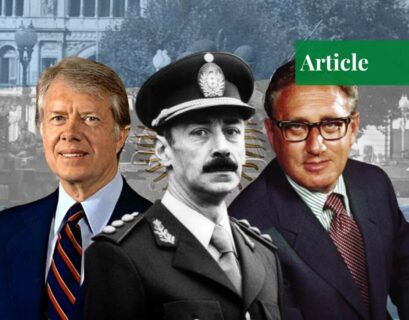Huma Masood has a bachelor's degree in International Relations from National Defence University, Islamabad. Her main interest lies in diplomacy, politics of the environment, international human rights and in foreign policy analysis.
Introduction
The resistance to America by the Viet Cong in the Vietnam War has its roots in 200 BC. In the early centuries, the Yue/Viets resided in the territory of modern-day China. However, they differed from the Chinese population and had their own identity.
These non-Chinese people moved to the south of China, beyond the autonomous region of Guangxi, and into the then Nam Viet—the Land of the Southern Viets. Today, Nam Viet is commonly referred to as Northern Vietnam. Since the time of their migration, the sense of being a separate nation haunted the Viets and drove their desire for a separate and independent home.
Even after this migration, it had been impossible for Viets to escape the clutches of Chinese colonization. It wasn’t until the 10th century, that the Viets realized their dream of national self-determination. This realization was engulfed by domestic turmoil and civil war. The turmoil- ridden century of humiliation for China brought the cure for Chinese colonization. However, by this time, European colonization had already replaced China with France in Dai Viet.
The centuries-long simmering sentiments of national integrity found another impetus addendum to anti-colonial and anti-western sentiments. In the aftermath of WWI & WWII, changing winds over European continents and Ho Chi Minh’s leadership resurrected the hopes of self-determination in the Vietnamese. Yet, the Vietnamese found themselves amid the securitized structures of the Cold War, shattering their hopes and pushing them into the communist bloc.
The history of suppression, colonization, civil war, and domestic turmoil left such a deep impact on Vietnam that it rooted the sentiments associated with them in the Viet Cong ideology. It makes one ask, “have the variegated ingredients—nationalism, anti-imperialism, anti-western and anti-American sentiments, and the securitized structure of the Cold War— accreted into the Vietcong ideology been forerunners for the success or failure of the Vietcong insurgency?”
Literature Review
The former United States Secretary of State and National Security Advisor, Dr. Henry Kissinger, had been a part of the American administration’s perception building and a played vital role in the decision-making process during the Vietnam War. He also received a Noble Prize for his efforts to withdraw American forces from Vietnam.
He very tersely penned down Vietnam’s turmoil in his book “On China”. He dedicated an entire chapter to enlightening the minds of readers about black-boxed Vietnam. The chapter helped in bridging the gaps between ground realities and the acquired perception from secondary sources. Dr. Kissinger very briefly tried to apprehend the Vietnamese perceptions and presented them in the light of international relations’ jargon and theories.
The book further advised the US administration to manipulate and exploit anti-China sentiments in Vietnam to encircle 21st century Vietnam. It can be safely guessed that sooner or later America will return to China her owed 1975’s Vietnam.
In the 21st century, the Indo-Pacific and more precisely, the South China Sea security architecture has grabbed the heart and minds of different scholars. Beyond any doubt, Dr. Robert D. Kaplan is well appreciated and regarded among his peers on the emerging debate of the region. Being a leading geo-strategist of this century, he has a broader grip over history, geography, and the map of South East Asia.
Alongside the history of various states of the region, he penned down Vietnamese history, culture, and the various insurgencies in his book “Asia’s Cauldron: The South China Sea and the End of a Stable Pacific”. Dr. Kaplan also discussed in detail the Vietnamese sense of separate national identity. In the book’s prologue—The Ruins of Champa—he pointed out that the sense of insecurity embedded itself in the Viets over the course of 1000 years.
“Long before the North and South Vietnams of the Cold War era, there were northern and southern Vietnams that had existed across this civilizational fault line and across the chasm of the centuries between antiquity and modern times: Dai Viet being a young and insecure kingdom in the north after having been a province of the Chinese Empire for over a thousand years.” 1
History holds many answers to help grasp the very idea that motivated and energized the Viet Cong in the Vietnam War. The fascinating assertion cited above is the essence of Dr. Kaplan’s research. He declared the ancient remnants of Dai Viet in the struggle against China as the thematic core of Vietnamese history.
An American historian and the Associate Professor of History at the University of Texas, Mark Atwood Lawrence, researched and worked extensively on the historical roots of the Cold War and the Indochina wars. He was one of the authors and editors of “The First Vietnam War: Colonial Conflict and Cold War Crisis.”
In the book, he analyzed the combined impact of Vietnam’s history, colonization, and its effect in the light of the Cold War. He maintained that the Vietnamese struggles against colonial France and then America established effective political and military apparatus that culminated in its victories against them both.
The endogenic variables are comprehensively analyzed and new conclusions are drawn about both Vietcong and Vietminh’s struggles. In the chapter authored by Chen Jian, the external factors are thoroughly analyzed. The support of the USSR and China through the prism of the Cold War bolstered the military capabilities of the insurgency in South Vietnam.2
RAND Corporation is one of the global leading American think tanks. It was established by the Douglas Aircraft Company to render research services and policy analysis for the United States Armed Forces. Back in 1964, during the Vietnam War, it compiled research to analyze the role of the North Vietnamese army in the support of the Viet Cong.
In “The Role of North Vietnam in the Southern Insurgency” border control problems were discussed at that time. The role of Laos and Cambodia was highlighted in facilitating Vietcong supplies. The research further pinpointed the vital role of North Vietnam in coordination, land material supply, spiritual leadership, and moral justification in the insurgency.
The first and oldest magazine of international relations, Foreign Affairs, published “The Faceless Viet Cong”. The article, authored by George A. Carver Jr., was well received and bagged great academic applause. The author differentiated between three different insurgencies. The first was between 1941 and 1945, the second encompassed the 1946 – 1954 Franco-Viet Minh insurgency, and the third focused on the 1956 American-Viet Cong insurgency.
The article traced the establishment of the Viet Cong; its struggles were strictly analyzed in the light of communism in the Vietnam War. Virtually all politically-minded Vietnamese have spent at least their adulthood, if not their whole lives, during the Communist struggle for power.3 The writer assessed the recent history of the Vietnamese struggle for independence, while largely ignoring the distance history, which has been the cornerstone of their civilization.
Richard Shultz, an American scholar of Security Studies, in “The Limits of Terrorism in Insurgency Warfare: The Case of the Viet Cong” evaluated the controlled use of the Viet Cong. He credited the success of the insurgency to its ideological structure and its connection to Vietnamese traditions. The article further explains, in great detail, the phenomenon of traditionalizing the Viet Cong ideology and strategy in Vietnam War.
Research Questions
Primary Question
Why can the success of the Viet Cong insurgency be attached with variegated ingredients of its ideological approach more than with other variables?
Secondary Questions
- Why is nationalism taken as the forerunner ingredient of the compounded nature of the Viet Cong’s propagated ideology?
- What role does colonization render in catering mass support for the Viet Cong insurgency?
- How did the securitized eastern-communist-based-structure of the Cold War complement the insurgency?
Hypothesis
The success of the Viet Cong insurgency is owed to the accretion of the variegated strands— nationalism, anti-imperialism, anti-western & anti-American sentiments, and communism—in its propagated ideology.
Theoretical Underpinning
The Necessity For a Cause
The Viet Cong were Southern Vietnamese who were struggling for the communist cause. The French defeat at the Battle of Dien Bien Phu ended the first phase of the Vietnam War. It was decided in the July 1954 Geneva Conference that elections would take place in 1956 in Vietnam. The hope of a unified Vietnam, under the command of Ho Chi Minh, was resurrected in the hearts and minds of various quarters of southern Vietnamese and in an overwhelming majority of the northern Vietnamese.
The sentiments of centuries-old nationalism, now compounded with communism and anti-Western/American sentiments, were just a couple of years away from realization. At the advent of the Cold War, the communism-based-ideological structure was complementing the millennia old Vietnamese dream of national-self-determination.
Moscow and Washington were confused over Vietnam’s ideological orientation. They could not understand if the Vietnamese were communists or nationalists first? In both powerhouses, sundry deliberations took place to reach a conclusion. However, the success of the communist revolution in China, and the loss of millions of people to communism, blurred the decision capability in Washington. President Eisenhower succinctly explained the American fear of communism by using the analogy of falling dominoes.
In his telegram to the U.S. Consulate in Hanoi on May 29, 1949, Secretary of State Dean Acheson instructed, “All Stalinists in colonial areas are nationalists. With the achievement of national aims (i.e., independence) their objective necessarily becomes subordination state to Commie purposes and ruthless extermination not only opposition groups but all elements suspected even slightest deviation. 4
Hitherto, this paper has discussed the two aspects of the Viet Cong’s ideology: the prevailed structure of communism and the nostalgia to unify Vietnam. Independent of their will and beyond their capabilities, the Vietnamese were locked down in the securitized structure of the Cold War. They had to choose one of the two blocs.
Viet Cong comes as quite a late development in the Vietnam War, owing to the many failed struggles of Ho Chi Minh to integrate the southern half of Vietnam with the northern half, Diem repressive policies, and the American re-negation of the Geneva Conference during the high phase of the Cold War.
Ho Chi Minh, from the Paris Treaty of 1919 to the Japanese surrender in 1945, worked hard to win freedom amicably from America. Yet, America’s close alliance with France during WWII never allowed Ho Chi Minh to be heard.
At the end of WWII, in a letter to President Truman, Ho Chi Minh wrote, “What we ask has been graciously granted to the Philippines. Like the Philippines, our goal is full independence and full cooperation with the United States. We will do our best to make this independence and cooperation profitable to the whole world.”5
The repeated negative response from Washington from 1919 to 1945 pushed America-loving Vietnam towards total communism. During the 20 years of crisis, between WWI & WWII, communism seemed to hold the answer to the fundamental problems facing colonized people everywhere.
A substitute to the Western democracy, the anti-imperialist ideological foundations of communism had great appeal for the colonized people and provided an alternative platform for Ho Chi Minh. It motivated him to bandwagon the Vietnamese cause of national self-determination with the anti-West, anti-America, and anti-imperialist ideology. It served synergy.
The two components of the Viet Cong ideology— anti-western and anti-Americanism, held quite overlapping characteristics but also had a sharp line of distinction. The anti-Western component was shaped over the last quarter of the 19th century and the first half of the 20th century. It had more entrenched roots and acted as the second most vital moving engine—the first being nationalism—of the Vietnam War.
The other component, anti-American, was more or less accidental and momentary. This element was forced to be one of the forerunner causes of the war by the American fear of the “Domino Effect”. This fear heightened due to the US’ intimate and strategic relations with France and China’s communist revolution.
The multi-layered, multifaceted ideological approach had quite a broader reach and a greater audience. Both in the north and south, the recipients of Ho Chi Minh’s message overwhelmingly outnumbered and outwitted the French imperial forces, Ngo Dinh Diem’s repressive measures, and caused America to withdraw in a rush. All these great forces left behind, victorious, Viet Cong and Northern Vietnam forces under the command of Ho Chi Minh.
American Strategic Miscalculation
To facilitate the cause of the Viet Minh in North Vietnam and the Viet Cong in the South, American miscalculation put its due share time to time. Firstly, by being in the American alliance system during WWII, the leader of the Vietnamese national cause—Ho Chi Minh—was expecting a respectable share in the terms of Vietnamese independence.
On September 2, 1945, Ho Chi Minh started the Declaration of Vietnam’s Independence from the immortal statement of the American Revolution, “All men are created equal. They are endowed by their Creator with certain unalienable rights; among these are life, liberty and the pursuit of happiness.”6
Hardly a year later, opposite to the spirit of Wilson’s fourteen points, the Atlantic Charter and Franklin Roosevelt’s “National-Self Determination principle” supported France’s aggression and colonizing ambitions on the Indochina peninsula. America chose the First Indochina War over American spearheaded Vietnamese independence.
Secondly, following the Battle of Dien Bien Phu, the US did not commit to the Geneva accord. It had been obsessed with China’s revolution. No doubt, the situation in the region was profound by then. China’s loss to communism and then further strategic miscalculation, of the unfolding regional structure, thrust the US into an unnecessary and unwinnable war.7
In later years, while analyzing the then strategic picture, Dr. Henry Kissinger stated, “The United States opposed North Vietnam as the spearhead of a Soviet-Chinese design. China supported Hanoi to blunt a perceived American thrust to dominate Asia. Both were mistaken. Hanoi fought only for its own national account”.8
Thirdly, the American-installed puppet regime of Diem even turned against its master. He adopted repressive measures that further complemented Ho Chi Minh’s cause. Diem was a catholic Christian and adopted a cowboy-style to deal with prevailed problems and chaos.
His odd and hard measures towards other religions led to the self-immolation of Thích Quảng Đức. The event shocked congressmen, and even President Kennedy. The aforementioned strategic miscalculation played a vital role in the establishment of the Viet Cong and in its ideational popularity in Vietnam War.
This multilayered accumulation, overlapping, expansion of the spectrum, and outreach of ideology kept bringing in, under the universal umbrella of Ho Che Minh’s leadership, various quarters of Vietnamese from the north and south.
Viet Cong spearheaded the cause in South Vietnam. Various preconditions, factors that set the stage for terrorism/insurgency over the long run—nationalism, anti-western sentiments, and simmering struggles of decolonization—precipitated the ideational burst and then provided solid foundations for Viet Cong. 9
Geographic Conditions and Guerrilla Warfare
In the national power ingredients, geographical factor plays a vital role. Geographical terrain has been discussed for centuries by different writers from Thucydides to Niccolò Machiavelli to Robert D. Kaplan. Sir Halford Mackinder’s charismatic theory of “Heartland” is established on the distinct feature of the terrain during the ancient, medieval, and early modern ages.
In Vietnam’s case, Robert D. Kaplan’s assertion fits more accurately that the terrain determines the pace and method of fighting.10 Southern Vietnam has long stretches of forest, its climate can be classified as a tropical and temperate zone vulnerable to change, and the high rate of precipitation in the monsoon season often causes floods. During the second Vietnam War, the US tried to use the changes in the weather patterns to inundate sundry supplying tracks.
However, local terrain, guerilla warfare tactics, and traditional strategies to lure and trap the enemy worked a lot in the insurgents’ favor. The concept of guerilla warfare was first established in the 6th century BC by the Chinese strategist Sun Tzu, in “The Art of War”. Many of the defined and suggested strategies of guerrilla warfare, in the book, were very carefully employed during the Vietnam War.
Years after, 21st century’s leading American geo-strategic Robert D. Kaplan succinctly diagnosed the inefficiency of airspace control over guerilla forces. Robert D. Kaplan maintained that an “Aircraft can bombard, but they cannot transport goods in bulk, nor exercise control on the ground.” 11
This represented the ground reality in Vietnam. In the Vietnam War, the Viet Cong controlled the ground, sometimes for their strategic supply supplanting through the Ho Chi Minh trail or the complex maze of underground tunnels. On the other hand, America, in the absence of a well-studied policy and strategy, resorted to the massive use of “disproportionate force”. The use of massive force without proper strategy ended in disaster for the American armed forces.
The United States largely relied on massive aerial bombing methods. During President Johnson’s tenure, America launched “Operation Roller Thunderstorm”. Massive carpet bombing was conducted over South and North Vietnam to impart gigantic damage to the dispersed, hidden, and underground Viet Cong. However, poor strategy, disproportionate force, and successful guerrilla warfare tactics never let the operation be fully effective.
Conclusion
Vietnam’s conundrum took more than 4 decades to solve. The Indochina War has been attached to multiple auxiliary players from France to the US. Yet, Ho Chi Minh remained a constant in it. In every phase of turmoil, foreign occupiers changed but the Vietnamese remained determined and consolidated.
During the different phases of the war, various variables had served as vital impetus to keep the will to fight alive, first the Viet Minh in the north and then the Viet Cong in South Vietnam. However, ideological factors played the defining role. Richard H. Shultz, an American scholar of international security studies, emphasized the ideological and organizational part as a vital vehicle of Viet Cong’s success to oust the USA from South Vietnam.
The revolutionary leader Ho Chi Minh played his cards in a very sophisticated way. He had been fighting for decades and had an in-depth understanding of both the Vietnamese and the occupying forces. He compiled a coherent string of different ideologies and sentiments, coated them with a thin layer of nationalism, and then linked them directly to the emotions of ordinary Viets.
George A. Carver Jr. in his article “The Faceless Viet Cong” scholarly averred that Viet Cong had learned from its repeated defeats over the last four decades. In the light of that learned behavior, Ho Chi Minh deployed the Bismarckian strand of diplomacy. He gave various ideological faces to the Viet Cong insurgency that allowed it to successfully muster support from the inside and outside.
1Robert D. Kaplan, “The Ruins of Champa,” in Asia’s Cauldron: The South China Sea and the End of a Stable Pacific (New York: Random House, 2015), 5.
2 Mark A. Lawrence and Fredrik Logevall, “China and Indochina Settlement at the Geneva Conference in 1954,” in The First Vietnam War: Colonial Conflict and Cold War Crisis (Cambridge: Harvard University Press, 2007).
3 George A. Carver Jr, “The Faceless Viet Cong,” Foreign Affairs, April 1966, https://www.foreignaffairs.com/articles/asia/1966-04-01/faceless-viet-gong
4 Telegram from Dean Acheson to the U.S. Consulate in Hanoi, May 20, 1949, Office of the Historian, Foreign Relations of the United States,Volume Seven, https://history.state.gov/historicaldocuments/frus1949v07p1/d28
5 Marilyn B. Young, John J. Fitzgerald, and A. T. Grunfeld, “The First Indochina War,” in The Vietnam War: A History in Documents (New York: Oxford University Press, USA, 2002), 26.
6 James M. Lindsay, “Remembering Ho Chi Minh’s 1945 Declaration of Vietnam’s Independence,” Council on Foreign Relations, last modified September 2, 2016, https://www.cfr.org/blog/remembering-ho-chi-minhs-1945-declaration-vietnams-independence.
7 Young, Fitzgerald, and Grunfeld, Vietnam War, 36.
8 Henry Kissinger, “Touching the Tiger’s Buttocks: The Third Vietnam War,” in On China, (New York: Penguin, 2012), 376.
9 Martha Crenshaw, “The Causes of Terrorism,” Comparative Politics 13, no. 4 (June 1981).
10 Robert D. Kaplan, “The Rimland Thesis,” in The Revenge of Geography: What the Map Tells Us about Coming Conflicts and the Battle Against Fate (New York: Random House, 2013), 95.
11 Kaplan, “The Rimland Thesis,” 99.
Bibliography
- Telegram from Dean Acheson to the U.S. Consulate in Hanoi. May 20, 1949. Office of the Historian. Foreign Relations of the United States.Volume Seven. https://history.state.gov/historicaldocuments/frus1949v07p1/d28
- Carver Jr., George A. “The Faceless Viet Cong.” Foreign Affairs. April 1966. https://www.foreignaffairs.com/articles/asia/1966-04-01/faceless-viet-gong
- Crenshaw, Martha. “The Causes of Terrorism.” Comparative Politics 13, no. 4 (1981): 379-399. doi:10.2307/421717.
- Kaplan, Robert D. “The Ruins of Champa.” In Asia’s Cauldron: The South China Sea and the End of a Stable Pacific, 5. New York: Random House, 2015.
- Kaplan, Robert D. “The Rimland Thesis.” In The Revenge of Geography: What the Map Tells Us About Coming Conflicts and the Battle Against Fate, 95. New York: Random House, 2013.
- Kissinger, Henry. “Touching the Tiger’s Buttocks: The Third Vietnam War.” In On China, 340-376. New York: Penguin, 2012.
- Lawrence, Mark A., and Fredrik Logevall. “China and Indochina Settlement at the Geneva Conference in 1954.” In The First Vietnam War: Colonial Conflict and Cold War Crisis, 240-261. Cambridge: Harvard University Press, 2007.
- Lindsay, James M. “Remembering Ho Chi Minh’s 1945 Declaration of Vietnam’s Independence.” Council on Foreign Relations. September 2, 2016. https://www.cfr.org/blog/remembering-ho-chi-minhs-1945-declaration-vietnams-independence
- Young, Marilyn B., John J. Fitzgerald, and A. T. Grunfeld. “The First Indochina War.” In The Vietnam War: A History in Documents, 27. New York: Oxford University Press, USA, 2002.
If you want to submit your articles and/or research papers, please check the Submissions page.
The views and opinions expressed in this article/paper are the author’s own and do not necessarily reflect the editorial position of Paradigm Shift.


















